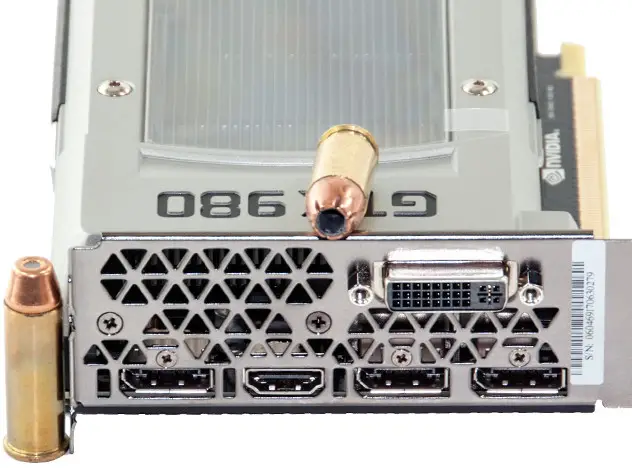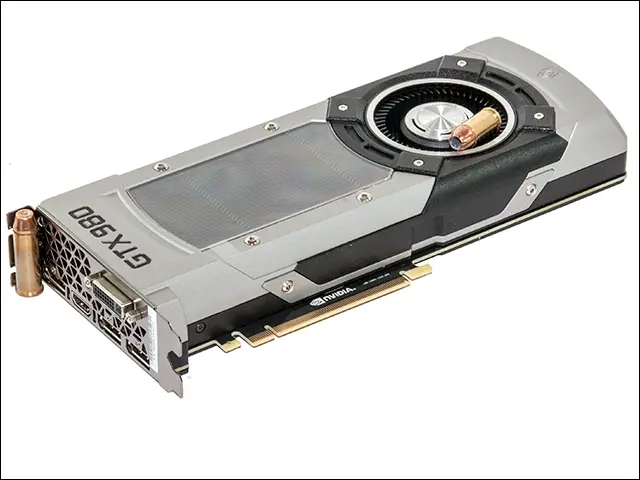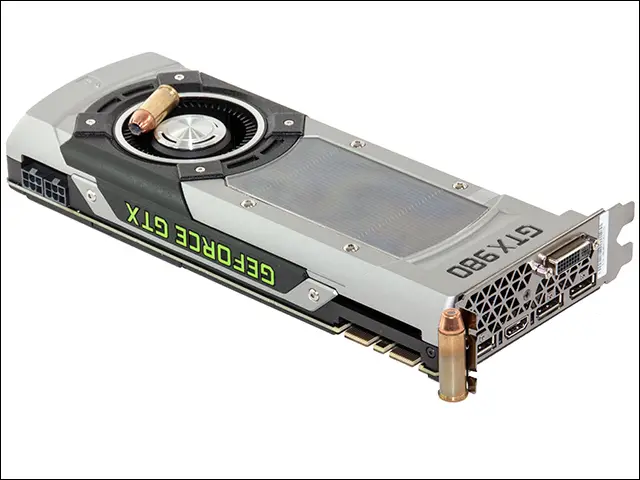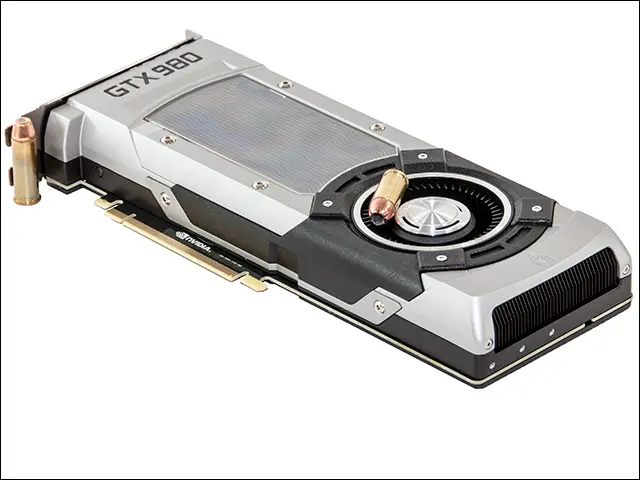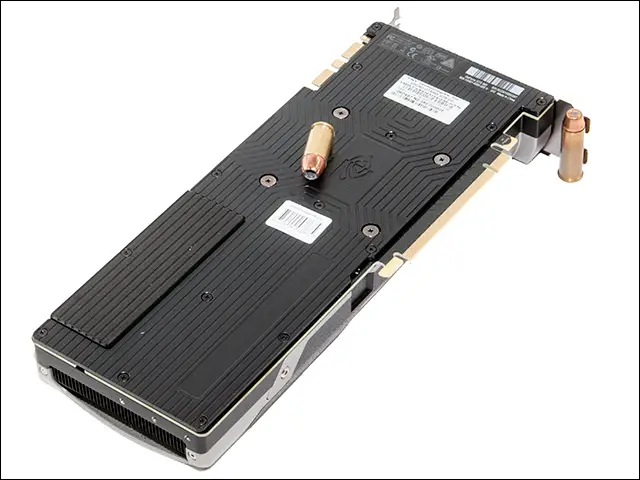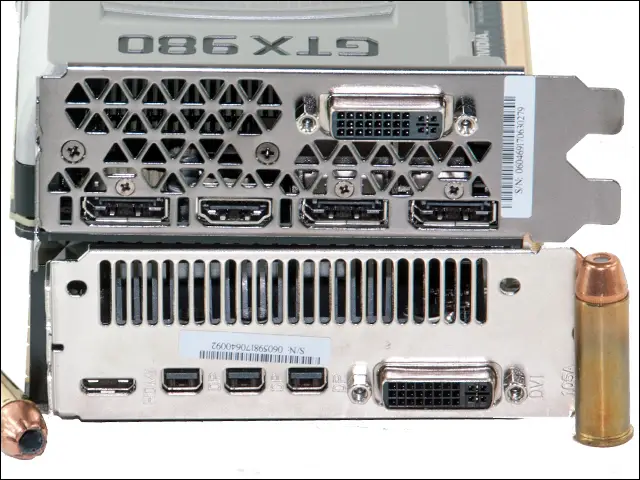A Closer Look at the PNY GeForce GTX 980 XLR8 4GB
With the exception of the model listed on the side, the shipping container for PNY GeForce GTX 980 XLR8 4GB is the exact same as what ships with the 970, 780, 750Ti, 750, and nearly every other PNY NVIDIA video card we have looked at in the past. This does make it very tedious to sort through if you have multiple PNY video cards, and are trying to RMA a certain card! On the positive side this shipping container is small, elegant and doesn’t take up much room so you will have no excuse if you lose it.
When you remove the internal packaging from the shipping container you can see that PNY has also one again opted for a plastic enclosure that is basically the same as the ones used in every other PNY video card. Needless to say PNY loves cutting costs wherever they can and passing that savings on to you. More importantly, unlike the exterior, we have no issues with that as this clear top and white bottomed plastic enclosure reduces the chances of damage to the card while in transit.
The included accessories are also classic PNY through and through. In grand total you get a single 6pin PCI-e adapter, a single digital to analog port adapter, a quick start guide, a CD with the necessary drivers, and as a nice little bonus you get a mini-HDMI to full size HDMI adapter.
For its time the 780 reference card was a major feat of engineering as it did run cooler than its predecessors; however with a TDP of 250 watts it still required heavy duty cooling and heavy duty power supplies. The PNY GeForce GTX 980 XLR8 has TDP of only 165 watts. The PNY GeForce GTX 780 XLR8 has 2304 CUDA cores which was a 50% boost over the 680’s 1536 core count. A PNY GTX 780 has a texture unit count of 192 and this was 50% more than a GTX 680s. The new PNY GeForce GTX 980 XLR8 makes use of only 2048, or 11% fewer CUDA cores than the GTX 780. The PNY GeForce GTX 980 XLR8 only has 128 texture units. Even more eyebrow raising is the memory bus has been downsized from 384-bit wide bus to a 256-bit bus. Yet this combination of fewer cores and texture units on a narrower memory bus promises to be more powerful than what the 780 core could do.
NVIDIA was able to do this because the Maxwell core is not a rehash of previous designs, instead they redesigned their architecture with a holistic approach in mind. Instead of simply throwing more power at the problem they not only made each Cuda core more efficient but also much faster. Instead of a maximum ‘boost’ speed of 900Mhz, these 2048 CUDA cores run at a base speed of 1126 which can be boosted to 1216Mhz. This in conjunction with the refinements NIVIDA has baked into each ‘Cuda core’ is why consumers cannot really compare them to the previous generation solely on a number basis. It would be like comparing an Intel 4th generation Core i7 CPU to a 3rd Generation Core i7 in that each new Cuda core is simply better than its predecessor.
While yes the texture units have been reduced to 128, these two have been upgraded and refined and once again simply looking at paper specifications does not tell the whole story. More importantly the Raster Operation Pipeline ‘ROP’ Count has been boosted from 48 to 64. The ROP subsystem is actually what handles the ‘eye candy’ (such as Anti-Aliasing) to the stream and then handles the actual writing of each pixel to the output buffer. These ROPs are also improved over the last generation at it is these improvements, in addition to all the others, that should allow for higher frame rates instead of simply higher specifications.
Turning our attention to the PNY GeForce GTX 980 XLR8 itself we can see that while it is indeed a ‘reference’ blower style equipped GTX 980, PNY has pulled out all the stops. If anything this new reference 980 is even prettier to look at than the reference PNY GTX 780 was. Not only does this ‘reference’ blower have the same dimensions as the previous 780’s reference blower, but PNY has actually increased the ‘wow’ factor but upgrading the amount of chrome that attaches to it!
While these noticeably improved aesthetics are certainly appreciated, what is much more impressive is what is hidden underneath all this metal & plastic fascia. For all intents and purposes PNY has bestowed this 165 watt TDP video card with the same beefy copper heatpipe and massive fin array cooler that came with the PNY GTX 780 XLR8. Usually we are not overly impressed with such recycling but this is one of the few exceptions. Basically the last generation blower cooler was designed around a 250 watt TDP processor. This means it had to be robust enough to handle a lot of heat and had to do so at moderate noise levels. When you pair that massive heatsink and large blower to a core that produces a third less heat well, that is the basis for not only much lower noise levels but also massive overclocking headroom!
As an added bonus PNY has finally seen the light, so to speak, and has included a full length backplate. This backplate not only helps spread the load of the heatsink across a much greater surface area, but also helps protect the PCB from errant screwdriver mistakes. As an added bonus it certainly finishes off the overall look of the PNY GeForce GTX 980 XLR8 and really gives this card an ‘enthusiast grade’ vibe that all $500+ cards should give you.
By removing the big and beefy heatsink and taking a good look at the PCB we can see that PNY has gone for a very decent, if not spectacular, multi-VRM power subsystem for both the GPU and the GDRR5 ram ICs. We doubt that this power delivery subsystem will be the weak link in this cards overclocking potential and rather it will simply come down to the luck of the draw on the GM204 core.
Much like the PNY GTX 970, this XLR8’er has a very nice selection of connection options. In total there is one HDMI port, one DVI port, and three DisplayPort ports. While opting for a full size version did mean that the DVI port had to be relocated to the second slot, not having to deal with converter cables for any of these ports makes the small air restriction more than worthwhile.
If all that was not enough as you can see the PNY GeForce GTX 980 XLR8 is not that much bigger a video card than the PNY GeForce GTX 970 XLR8. No matter what you think about the PNY GeForce GTX 970 XLR8 this additional bit of space is certainly worth the increased hassle factor in case selection!
